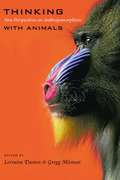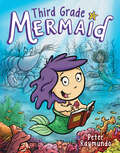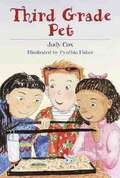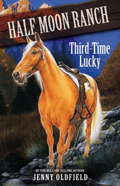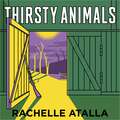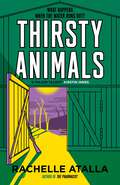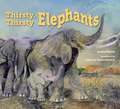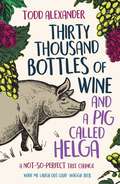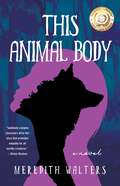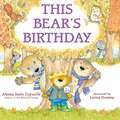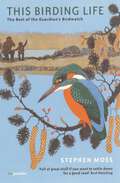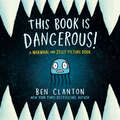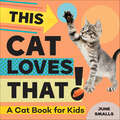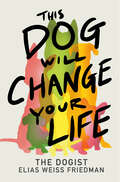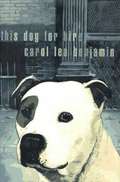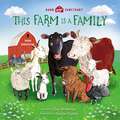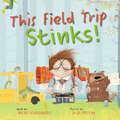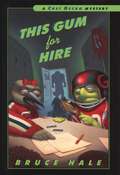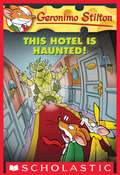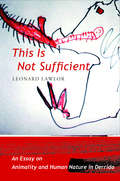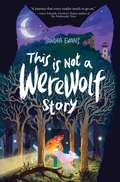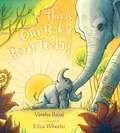- Table View
- List View
Thinking with Animals: New Perspectives on Anthropomorphism
by Gregg Mitman Lorraine DastonIs anthropomorphism a scientific sin? Scientists and animal researchers routinely warn against "animal stories," and contrast rigorous explanations and observation to facile and even fanciful projections about animals. Yet many of us, scientists and researchers included, continue to see animals as humans and humans as animals. As this innovative new collection demonstrates, humans use animals to transcend the confines of self and species; they also enlist them to symbolize, dramatize, and illuminate aspects of humans' experience and fantasy. Humans merge with animals in stories, films, philosophical speculations, and scientific treatises. In their performance with humans on many stages and in different ways, animals move us to think. From Victorian vivisectionists to elephant conservation, from ancient Indian mythology to pet ownership in the contemporary United States, our understanding of both animals and what it means to be human has been shaped by anthropomorphic thinking. The contributors to Thinking with Animals explore the how and why of anthropomorphism, drawing attention to its rich and varied uses. Prominent scholars in the fields of anthropology, ethology, history, and philosophy, as well as filmmakers and photographers, take a closer look at how deeply and broadly ways of imagining animals have transformed humans and animals alike. Essays in the book investigate the changing patterns of anthropomorphism across different time periods and settings, as well as their transformative effects, both figuratively and literally, upon animals, humans, and their interactions. Examining how anthropomorphic thinking "works" in a range of different contexts, contributors reveal the ways in which anthropomorphism turns out to be remarkably useful: it can promote good health and spirits, enlist support in political causes, sell products across boundaries of culture of and nationality, crystallize and strengthen social values, and hold up a philosophical mirror to the human predicament.
Third Grade Mermaid
by Peter RaymundoFor fans of The Dork Diaries comes a new and heavily illustrated chapter book series about a fiery third grade mermaid who thinks she wants to be where the shimmery Sirens are!Cora is a small mermaid with a BIG personality. But like so many mermaids in the third grade, she is struggling to truly be herself. She wants to be like the Singing Sirens, the most glamorous swim team in the sea. Unfortunately, an annoying road--er, seablock--keep getting in her way.When Cora fails her spelling test, her coach says she can’t be on the team unless she gets an A on the next one!Can Cora conquer her spelling test, make the swim team, AND stay true to herself at the same time?
Third Grade Pet
by Judy CoxThe good news is that the third grade can buy a class pet. The bad news for Rosemary is that the kids want a rat! How gross! There's no way Rosemary's mother will let her take a turn as ratkeeper for a creepy, dirty animal.
Third Time Lucky: Book 6 (Horses of Half Moon Ranch #6)
by Jenny OldfieldKirstie and her horse, Lucky, are inseparable. When Lucky shows signs of a mystery illness - and neither the vet, nor Kirstie's brother can identify what's wrong, Kirstie makes a third and final attempt to find a cure for Lucky. She seeks out the legendary horse doctor who lives deep in the Rockies. Will he be able to save Lucky's life?
Thirsty Animals: A totally compelling and compulsive must-read of 2023
by Rachelle AtallaThe next audiobook from new, exciting writer Rachelle Atalla. 'Rachelle Atalla is a major talent and I can't wait to see where her mind goes next' Kirstin Innes, author of Scabby QueenTHE WORLD IS RUNNING OUT OF WATER. With supply in the Scottish cities drying up, Aida is forced back home to live with her mum at their rural farm. For now, they are safe with just enough to get by. Yet at the border, tensions are close to breaking point as more and more southerners chase the delusion that Scotland is an eternal spring - while fewer and fewer are allowed through. The service station where Aida works grows emptier with every day. Then, when suspicious strangers arrive at the farm asking for help, Aida and her family face a terrible decision. How much water can they afford to share? AND THEN THE TAPS ARE TURNED OFF. Now they must survive long enough for the rain to come.Completely compelling, devastating and thought-provoking, Thirsty Animals takes us on a captivating journey of survival and self-discovery.(P) 2023 Hodder & Stoughton Limited
Thirsty Animals: A totally compelling and compulsive must-read of 2023
by Rachelle AtallaWHAT HAPPENS WHEN THE WATER RUNS OUT?THE WORLD IS RUNNING OUT OF WATER. With supply in the Scottish cities drying up, Aida is forced back home to live with her mum at their rural farm. For now, they are safe with just enough to get by. Yet at the border, tensions are close to breaking point as more and more southerners chase the delusion that Scotland is an eternal spring - while fewer and fewer are allowed through. The service station where Aida works grows emptier with every day. Then, when suspicious strangers arrive at the farm asking for help, Aida and her family face a terrible decision. How much water can they afford to share? AND THEN THE TAPS ARE TURNED OFF. Now they must survive long enough for the rain to come.Completely compelling, devastating and thought-provoking, Thirsty Animals takes us on a captivating journey of survival and self-discovery.'Original, timely, terrifying. Thirsty Animals takes a brutal yet deeply heartfelt look at survival, and kindness, and just how difficult it can be for the two to coexist at the extremes' CHRIS WHITAKER'Thirsty Animals is a hard-hitting speculative thriller, equal parts terrifying and compassionate. Beautifully written, vivid and unflinching, it confirms Atalla as a real talent' DOUG JOHNSTONE'Rachelle Atalla's second novel has shown her once again to be a master of slow-burning tension and unease . . . The pace of the story builds to an unputdownable conclusion, and the characters will stay with the reader for a long time' CAILEAN STEED
Thirsty, Thirsty Elephants
by Sandra MarkleElephants never forget During a drought in Tanzania, Grandma Elephant is in search of water for her herd. Little Calf follows along and mimics her grandmother at each stop on their journey. When Grandma leads them to a watering hole she recalls from years before, the elephants are overjoyed and Little Calf splashes about with her tender leader. Grandma's persistence and powerful memory is something Little Calf will never forget. Based on true events. Sandra Markle&’s acclaimed nonfiction writing takes on a more lyrical style alongside Fabricio VandenBroeck&’s gorgeous illustrations making this story of animal behavior accessible for younger readers. Back matter includes further information about the phenomenon of a herd of elephants that survived a drought, as well as fascinating elephant facts.
Thirty Thousand Bottles of Wine and a Pig Called Helga: A not-so-perfect tree change
by Todd AlexanderOnce I was the poster boy for corporate success, but now I’m crashing through the bush in a storm in search of a missing pig. How the hell did we end up here? Todd and Jeff have had enough of the city. Sick of the daily grind and workaday corporate shenanigans, they throw caution to the wind and buy 100 acres in the renowned Hunter Valley wine region, intent on living a golden bucolic life and building a fabulous B&B, where they can offer the joys of country life to heart-weary souls. Todd will cook, Jeff will renovate. They have a vineyard, they can make wine. They have space, they can grow their own food. They have everything they need to make their dreams come true. How hard can it be?‘This joyously honest account will make you laugh till it hurts, and you’ll shed more than a few tears while being captivated by Todd, Jeff and their menagerie of loveable animals’ Bradley Trevor Greive AM, international bestselling author of The Blue Day Book and Penguin Bloom
This Animal Body: A Novel
by Meredith WaltersFrankie Conner, first-year graduate student at UC Berkeley, is finally getting her life together. After multiple failures and several false starts, she’s found her calling: become a neuroscientist, discover the cause of her depression and anxiety, and hopefully find a cure for herself and everyone like her.But her first day of the program, Frankie meets a mysterious group of talking animals who claim to have an urgent message for her. The problem is, they’re not willing to share it. Not yet. Not until she’s ready.While Frankie’s new friends may not have her highly evolved, state-of-the-art, exalted human brain, they do know things she doesn’t—poems, scientific facts, and what happened in the forgotten years before her adoption. Frankie can’t dismiss her conversations with these animals as mere dreams, but she also can’t accept them as real. To prove she’s still sane, she investigates her past and defies the professor who heads her lab to conduct a series of scientific experiments to test just how much animals are capable of communicating. Just when Frankie uncovers the truth, she has to make an impossible choice: betray the animals she’s fallen in love with—or give up her dream of neuroscience, her last chance at success, and everything she thought she knew.This Animal Body is printed on FSC-certified paper from responsibly-managed, environmentally-sound sources.
This Bear's Birthday
by Alyssa Satin CapucilliIt's Bear's birthday, and he's determined to prepare for his party all by himself. Who can get dressed, pick apples, and make peanut butter and honey sandwiches without (much) help from Mama and Papa? This bear can! Then Bear finds out there are some things that can't be done. But with friends and family by his side, a bear can still save the day!
This Birding Life: The Best of the Guardian's Birdwatch
by Stephen MossThis collection of essays “gives bird enthusiasts the next best thing to birdwatching, an eloquent and insightful consideration of birds and birding” (Publishers Weekly).Stephen Moss’s collection of Guardian “Birdwatch” columns forms a fascinating picture of one man’s birding life: from early coot-watching as a young boy, through teenage cycle trips to Dungeness, to adult travels around the world as a TV producer working everywhere from the Gambia to Antarctica.Drawing on nearly twenty years of columns for the Guardian, Stephen covers local, national and foreign birding encounters. From the (varying) excitement and peace of his chosen pursuit, to the growing uncertainties posed by climate change, the author brings an enthusiasm and sincerity to the subject that will energise even the most fair-weather of birdwatchers.
This Book Is Dangerous! (A Narwhal and Jelly Book)
by Ben ClantonTake the plunge into this interactive picture book spin-off of the bestselling Narwhal and Jelly series starring everyone&’s favorite anxious jellyfish. Help Jelly attempt to safely navigate through the dangerous ocean and this book — with hilarious results! Features a glow-in-the-dark cover!Did the title just say that this book is dangerous? Jelly doesn't do dangerous. Can you help Jelly find a way out? Just don't move a muscle or make any loud noises, okay? And definitely DON'T touch anything!While everything seems to come sunny-side up for Narwhal on their adventures, Jelly has more than a few worries about the many dangers out there in the ocean: sea serpents, pirate crabs, circus cannons, lost porcupines, and spiky things of any kind could be lurking around each turn of the page! In the tradition of interactive classics like The Monster at the End of This Book, Jelly has got to find a way out of this book, and it's up to the reader to help this little jellyfish . . . or not!WARNING: This book is dangerously fun!
This Book Just Ate My Dog!
by Richard ByrneWhen her dog disappears into the gutter of the book, Bella calls for help. But when the helpers disappear too, Bella realizes it will take more than a tug on the leash to put things right. Cleverly using the physicality of the book,This book just ate my dog!is inventive, ingenious, and just pure kid-friendly fun! Picture descriptions present.
This Cat Loves That!: A Cat Book for Kids
by June SmallsPut cute cats to the test and find out what they love best!—an early-learning book for toddlers and preschoolersIf you've been looking for cat books for kids, you'll love This Cat Loves That!, a fun rhyming story filled with tons of cute and colorful cat photos that will help your little one learn about their feline friends. Your child will delight in discovering what cats love, as well as some stuff they don't. Of all the cat books for kids, this one is the purr-fect introduction to one of their favorite animals!This standout among cat books for kids includes:Photos of different cat breeds and agesA narrative designed to engage toddlers and pre-K kidsBasic fun facts about catsWhen it comes to cat books for kids, this one is the cat's pajamas!
This Dog Team Live In The House: Written and Illustrated by Beverly Stevens
by Beverly StevensThis Dog Team Lives in the House is a tender story of an adopted dog, Spirit, who must learn how to belong in her new, very unusual family. Joining eleven sled dogs that all live in the house, Spirit discovers that when you try your best, amazing results can be achieved. In this heartwarming story, the author's life is captured in the illustrations, which combine watercolor with photographs from her personal album. Within this actual family of sled dogs living in a suburban Alaska neighborhood, Spirit discovers the success of working as a team member, and the joy of being part of a loving family.
This Dog Will Change Your Life
by Elias Weiss FriedmanA uniquely insightful, uplifting, emotional, and informative book that shows us how dogs make our lives better by making us better people from the Dogist. <P> Elias Weiss Friedman became known as The Dogist when he took thousands of photos of dogs and posted them online along with their unique dog stories. Even before he was The Dogist, though, he was a Dogist—a fervent dog lover, and an evangelist about the relationship between dogs and humans and the joy this bond brings us in the modern world. Over his decades of studying dogs and their people, Elias has arrived at a deceptively simple realization: Dogs make people’s lives better by making people better. Dogs improve us. They save us. They give our lives greater meaning and fulfillment. They teach us to become the best versions of ourselves. They help us understand our own identities, deepen our relationships, and remind us of patience, purpose, and commitment. We constantly seek those things in our human life, but so many of the answers are already right in front of us, in our dogs. <P> This book weaves together stories of the many dogs Elias has been lucky enough to know, both in his personal life and while doing his Dogist work. Told in a light tone that does not shy away from more serious issues (Elias is not above the occasional sentimental moment or dog pun), this book charmingly explores the ways that dogs are not just our family and our friends but also irreplaceable beings capable of generating boundless love and restoring balance to our lives. In an increasingly alienating and divisive world, there is one clear remedy: the one with four legs that rolls over for belly rubs. Dogs can change our lives, and this book might just change yours. <b>New York Times Bestseller</b>
This Dog for Hire (Rachel Alexander and Dash Mystery #1)
by Carol Lea BenjaminShe gets top billing. But he's the real teeth of the operation. In the search for a killer, they make the perfect team.... She's thirty-eight, too independent for most men's taste, and too suspicious for her own good. In her back-alley Greenwich Village cottage, private investigator Rachel Alexander has one ace in the hole: Dash, the devoted, barrel-chested pit bull terrier she once saved from certain death, and who is now about to return the favor. Dash and Rachel are looking for a missing barkless champion basenji named Magritte, and for a killer. The basenji belonged to a struggling artist found dead on a downtown pier near a sign that said "don't be caught alone." As Rachel pursues a string of clues that take her from the SoHo art scene to the world of Manhattan's homeless to the Westminster Kennel Club dog show, those words echo in her mind. For in an urban landscape where good friends are hard to come by and true lovers even harder, Rachel soon discovers how dangerous it can be to trust the wrong person. Unless, of course, that person is a dog...
This Farm Is a Family (Barn Sanctuary)
by Dan McKernanIn this adorable illustrated picture book for kids written by Dan McKernan (Saved by the Barn), the rescue farm animals at Barn Sanctuary decide to help a cow who is dealing with fear and anxiety in her new home. Children will learn the importance of friendship and compassion, as well as why it&’s important to support others during hard times.Inside this book, kids ages 4-8 will discover:A positive message about friendship, kindness, and understanding othersHow to show compassion to othersWays of coping with difficult situations, including how to deal with fear and anxietyA page with information on Barn Sanctuary and their rescue efforts, with information on ways you can support the real-life animals featured in the bookThis Farm Is a Family follows a group of rescued farm animals who are living their best lives at Barn Sanctuary. Each one is eager to meet the newest arrival, Buttercup the cow, and show her all the fun things they can do together. But Buttercup doesn&’t want to play--in fact, she doesn&’t want anything to do with the other animals. So with a lot of love and understanding, the animals work together to help Buttercup discover she&’s part of a new family and can leave her old fears behind.This Farm Is a Family is perfect for:Birthdays, Christmas, and Easter or Passover gifts, as well as back to school readingChildren ages 4-8 who love farm animals and cuddly creaturesTeaching young readers kindness and compassion, and that they can make a difference in the worldKids who are in a new school, new neighborhood, or new house
This Field Trip Stinks!
by Becky ScharnhorstThe hilarious sequel to My School Stinks! about a young boy at his school full of animals as they embark on an adventure-filled field trip! Perfect for fans of Ryan T. Higgins's We Don't Eat Our Classmates, Elise Parsley's If You Ever Want to Bring an Alligator to School, Don't!, and the Magic Schoolbus adventures! Dear Diary, This morning, Mr. Grizzly announced we&’re taking a field trip. I thought we&’d study stars at the planetarium or dinosaurs at the Natural History Museum. But we&’re going to study plants and animals. . . IN THE WILD! I&’ve read enough books to know nature is FULL of poisonous plants, creepy crawlies, and ferocious beasts! Besides, isn&’t our class wild enough?Peek into Stuart's journal as he and his class brave the wilderness together, encountering gross bugs, terrifying animals, and--worst of all--NO BATHROOMS in this field trip adventure. Praise for This Field Trip Stinks!:"A relatable tale that will bolster the spirits of readers dreading their own field trips." --Kirkus reviews
This Gum for Hire
by Bruce HaleKidnapped! One by one, the members of Emerson Hicky's football team are disappearing. As far as Chet Gecko is concerned, this is a cause for celebration. Only trouble is that Chet's old nemesis, Herman the Gila Monster, is the number one suspect, and he wants Chet to clear his (not quite) good name. Chet and his mockingbird partner, Natalie Attired, must solve the case fast, or Herman will make sure it's their last. But which is more dangerous--Herman . . . or P.E. class?
This Hotel Is Haunted!: This Hotel Is Haunted! (Geronimo Stilton #50)
by Geronimo StiltonMy good friend Hercule Poirat and I were called to investigate mysterious events in the famouse Grand Hotel in New Mouse City. There was a ghost haunting the hotel and scaring guests! It was wearing armor and carrying a ball and chain. I know that ghosts don't exist, but this was pretty spooky. Would Poirat and I be able to solve this spine-tingling mystery?<P><p> <i>Advisory: Bookshare has learned that this book offers only partial accessibility. We have kept it in the collection because it is useful for some of our members. To explore further access options with us, please contact us through the Book Quality link on the right sidebar. Benetech is actively working on projects to improve accessibility issues such as these. </i>
This Is Not My Hat
by Jon KlassenWINNER OF THE 2013 CALDECOTT MEDAL! From the creator of the #1 New York Times best-selling and award-winning I Want My Hat Back comes a second wry tale. When a tiny fish shoots into view wearing a round blue topper (which happens to fit him perfectly), trouble could be following close behind. So it’s a good thing that enormous fish won’t wake up. And even if he does, it’s not like he’ll ever know what happened. . . . Visual humor swims to the fore as the best-selling Jon Klassen follows his breakout debut with another deadpan-funny tale.
This Is Not Sufficient: An Essay on Animality and Human Nature in Derrida
by Leonard LawlorDerrida wrote extensively on "the question of the animal." In particular, he challenged Heidegger's, Husserl's, and other philosophers' work on the subject, questioning their phenomenological criteria for distinguishing humans from animals. Examining a range of Derrida's writings, including his most recent L'animal que donc je suis, as well as Aporias, Of Spirit, Rams, and Rogues, Leonard Lawlor reconstructs a portrait of Derrida's views on animality and their intimate connection to his thinking on ethics, names and singularity, sovereignty, and the notion of a common world.Derrida believed that humans and animals cannot be substantially separated, yet neither do they form a continuous species. Instead, in his "staggered analogy," Derrida asserts that all living beings are weak and therefore capable of suffering. This controversial claim both refuted the notion that humans and animals possess autonomy and contradicted the assumption that they possess the trait of machinery. However, it does offer the foundation for an argument-which Lawlor brilliantly and passionately defines in his book-in which humans are able to will this weakness into a kind of unconditional hospitality. Humans are not strong enough to keep themselves separate from animals. In other words, we are too weak to keep animals from entering into our sphere. Lawlor's argument is a bold approach to remedying "the problem of the worst," or the complete extermination of life, which is fast becoming a reality.
This Is Not a Werewolf Story
by Sandra EvansA fresh, heartwarming, and fascinating debut that two-time Newbery Honor winner Gary Schmidt calls “a journey that every reader needs to go on.”This is the story of Raul, a boy of few words, fewer friends, and almost no family. He is a loner—but he isn’t lonely. All week long he looks after the younger boys at One Of Our Kind Boarding School while dodging the barbs of terrible Tuffman, the mean gym teacher. Like every other kid in the world, he longs for Fridays, but not for the usual reasons. The woods have secrets...and so does Raul. As soon as the other students go home for the weekend, Raul makes his way to a lighthouse deep in the heart of the woods. There he waits for sunset—and the mysterious, marvelous shapeshifting phenomenon that allows him to go home, too.
This Is Our Baby, Born Today
by Varsha BajajA baby is born and the world rejoices!With a loving mama, a trumpeting herd, curious cousins, and even some dancing peacocks heralding this little one&’s arrival, it is apparent that the joy and wonder a new baby brings is shared by all! Varsha Bajaj&’s lilting prose and Eliza Wheeler&’s enchanting scenes of a wide-eyed baby elephant and its smitten family celebrate the importance of family and community in every child&’s life. Set in the lush wilds of India, this is an endearing, beautifully illustrated tribute to little ones getting their first warm welcome to the world.
